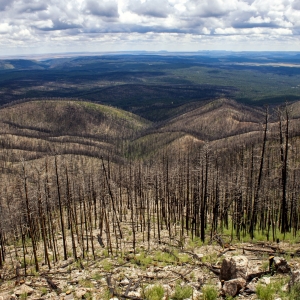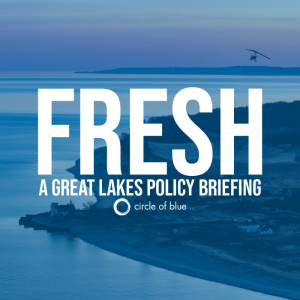Federal Water Tap, October 30: Feds Back State-Led Colorado River Conservation Plan
The Rundown
- Bureau of Reclamation reassesses options for Colorado River water conservation over next three years.
- The White House asks Congress for $55 billion on domestic disaster relief, other emergencies.
- The Treasury Department releases a report on climate hazards and household finances.
- The House approves a 2024 budget for the Army Corps and Interior Department with provisions related to water in California, the Great Lakes, and Ogallala Aquifer.
- The EPA proposes a ban on the cancer-causing chemical TCE.
- The Biden administration outlines spending for tribal water rights settlements in 2024.
And lastly, the U.S. Fish and Wildlife Service backs away from requiring water for a Kansas wildlife refuge.
“There is a lot happening in the world today — not to mention a lot of chaos in some corners of Congress at the moment — and while we absolutely must deliver on key national security priorities as quickly as we are able to, we’ve also got to tackle the challenges facing families here at home, especially the growing child care crisis.” — Sen. Patty Murray (D-WA), chair of the Senate Appropriations Committee, responding to the White House’s request for $55 billion in supplemental funding for domestic emergencies.
By the Numbers
$327 Million: Funding in fiscal year 2024 for carrying out tribal water rights settlements. Half of the money will go toward the Navajo-Gallup Water Supply Project, a water-delivery system for parts of the Navajo Nation and Gallup, New Mexico. The project was authorized in 2009.
In context: Big Water Pipelines, an Old Pursuit, Still Alluring in Drying West
$55 Billion: Supplemental funding that the White House requested from Congress to respond to domestic disasters and emergencies. The request includes payments to farmers for uninsured crop and livestock losses ($2.8 billion); debris removal from flooding in the Northeast and fires on Maui ($161 million); two “hurricane hunter” aircraft ($600 million); repairs to naval facilities from tropical storms in Guam, Florida, and Tennessee ($1.3 billion); covering shortfalls in FEMA’s Disaster Relief Fund ($9 billion). The request also covers energy bill assistance, broadband service for low-income households, and childcare services.
Earlier this month the Biden administration asked Congress for $105 billion in supplemental funding for national security, a request that includes $9.15 billion in additional humanitarian aid for Gaza, Israel, and Ukraine. The Senate Appropriations Committee will hold a hearing on that request on October 31.
News Briefs
2024 Budget
The Republican-led House passed a 2024 budget for energy and water agencies — the Army Corps, Energy Department, and Interior Department. In terms of policy, the bill also changes water supply, use, and planning in California.
The top-line figures: nearly $1.7 billion for the Bureau of Reclamation’s water projects account, some $392 million above President Biden’s budget request; and $9.57 billion for the Army Corps, an increase of nearly $2.2 billion from the budget request.
For the Army Corps, the bill laments the slow progress of barriers to keep invasive carp from spreading in the Great Lakes. The bill also encourages the Corps to work with local governments in the High Plains to identify the steps needed to build a pipeline to western Kansas to replenish the over-drafted Ogallala Aquifer. Seven years ago, the corps updated a 1982 study of the matter.
For California, the bill dictates several provocative changes. It orders the main state and federal canal systems to operate under fish-protection rules established during the Trump administration. It asserts that federal funds, including those appropriated to Reclamation’s water projects account, could be spent on raising the height of Shasta Dam. Such a move would contradict the state, which has deemed the project too environmentally damaging to permit.
Passing a budget will be a leading issue in Congress in the coming weeks. The continuing resolution that currently funds the government expires November 17.
TCE Proposed Ban
The Environmental Protection Agency proposes banning the production and use of the cancer-causing chemical trichloroethylene, or TCE.
Commonly contaminating the groundwater of Superfund sites, TCE has a variety of uses, notably in dry cleaning, degreasing, and sealants.
Under the proposal, the volatile chemical would be banned within a year for most uses. Particular industries would see a longer phase-out, including 10 years for its use in the production of rocket booster nozzles and 10 years for degreasing Defense Department equipment.
Public comments are being accepted atwww.regulations.gov using docket number EPA-HQ-OPPT-2020-0642.
The EPA will hold a webinar about the proposal on November 14. Register here.
Chemical Risk Assessment
The EPA also proposes to expand its chemical risk assessments under the Toxic Substances Control Act to include exposure via air, land, and water.
Studies and Reports
Colorado River Conservation Plan
Two things saved the Colorado River basin from earth-shaking, mandatory water cuts over the next three years: a wet winter and taxpayer money.
The Bureau of Reclamation released a revised draft environmental impact statement for managing the Colorado River through 2026, when current guidelines expire.
Reclamation is embracing a proposal from the three lower basin states of Arizona, California, and Nevada. The idea is to conserve 3 million acre-feet that will be compensated via payments from federal funds.
The cuts are milder than those that Reclamation leadership had suggested in the summer of 2022, when rapidly declining water levels at Mead and Powell reached a crescendo. The change is due to bountiful moisture in the last 12 months and pre-existing conservation measures that lifted the basin’s reservoirs.
The improvement does not mean all is well in the basin. The wet winter bought the states and Reclamation a year or so. Still on the table is the difficult task of aligning water demand with a supply that is shrinking over the long term.
Public comments on the draft are being accepted through December 11.
Climate and Personal Finances
The number of billion-dollar weather disasters is rising. But what does that mean at home?
The Treasury Department released a report on the effect of climate disasters on household finances.
The report assessed three hazards: flooding, extreme heat, and wildfire. Where is the risk highest? About one-fifth of all U.S. counties have high exposure to one of these hazards and high economic/social vulnerability. Many are in the South, West, and Pacific Northwest, but especially in Appalachia, the U.S.-Mexico border, and the Mississippi delta.
On the Radar
Water for Kansas Wildlife
The U.S. Fish and Wildlife Service, in the face of intense state and local pressure, is backing away from its demands that Kansas regulators secure water for a federal wildlife refuge that is important habitat for migrating sandhill cranes, KCUR reports.
Quivira Wildlife Refuge has for years been at the center of a struggle over water use in Kansas. More water for the refuge’s 7,000 acres of wetlands means that farmers would have to pump less groundwater.
Senate Hearing on Extreme Weather Attribution
On November 1, the Senate Committee on Environment and Public Works will hold a hearing on the science of attributing extreme weather events to climate change.
U.S.-Mexico Environmental Issues
On November 6, the Good Neighbor Environmental Board, a federal agency advisory committee, will meet to discuss a report on water and wastewater infrastructure challenges on the U.S.-Mexico border.
To attend the meeting, in person or virtually, contact green.eugene@epa.gov.
Federal Water Tap is a weekly digest spotting trends in U.S. government water policy. To get more water news, follow Circle of Blue on Twitter and sign up for our newsletter.
Brett writes about agriculture, energy, infrastructure, and the politics and economics of water in the United States. He also writes the Federal Water Tap, Circle of Blue’s weekly digest of U.S. government water news. He is the winner of two Society of Environmental Journalists reporting awards, one of the top honors in American environmental journalism: first place for explanatory reporting for a series on septic system pollution in the United States(2016) and third place for beat reporting in a small market (2014). He received the Sierra Club’s Distinguished Service Award in 2018. Brett lives in Seattle, where he hikes the mountains and bakes pies. Contact Brett Walton







Leave a Reply
Want to join the discussion?Feel free to contribute!